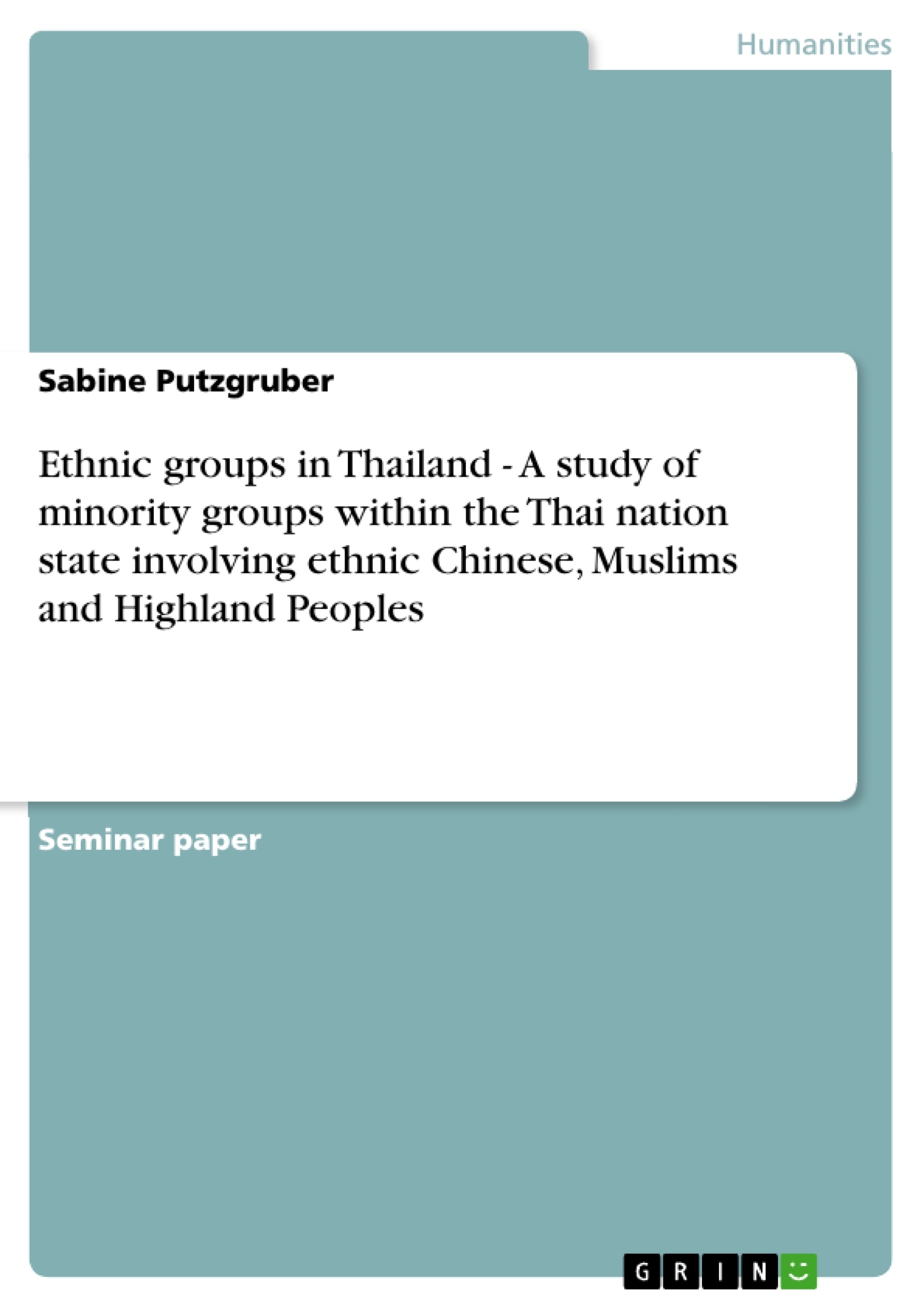I am writing this paper on the Thai nation state and its minorities as a student of political sciences as well as social and cultural anthropology, educated at the University of Vienna. Through a short period I had the chance to study Thai culture in the country itself but this is not given me enough proficiency to judge the same. On my research I rely on scholars which have had wide range of vast experiences with the country, nevertheless I try to implement my own experiences in a, as far as it is possible, objective way.
Since 1939 Thailand exists, but only the name itself appeared then as Siam, its former name was known already hundreds of year, back to its traditional founding date in 1238 (CIA Factbook, Winichakul 1994:150). The difference between Siam and Thailand is the form of its organization, as Siam was always a monarchy ruled by an absolute monarch. Only 1932 this absolute monarchy became history and a new form of state was born. From there on we speak of Thailand – a modern nation state (McCargo 2000). As Thongchai Winichakul writes was this change a political act of a chauvinist regime to promote the domination of the ethnic Thai and their culture over others. The Thai government under Phibun (1939-1944) had adopted to fascism, which was a global current during this time, they promoted the notion of the great Thai race and their territory (Winichakul 1994:18,150).
The following paper is going to deal with this concept of the Thai state during the major part of the last century, describing the challenges the western concept brought with it, especially in terms of ethnicity. Thailand was formed with nationalistic ideas, in a territorial as well as an ethnic way, whereas the latter was natural due to the fact that, as nowadays, 95% of the Thai citizens define themselves as ethnic Thai’s – including Isarn and Lanna (see 2.3). At the beginning of the nation this did not look as clear as it seams. As a part of the heterogeneous South East Asia also the territory of Thailand is inhabited by a wide ethnic divergence. Thailand itself brought many Chinese immigrants into the country, as workers adding to their economic boom. Where are they now? And much more interesting what are they now?
Table of Contents
- Introduction
- The Thai Nation State
- Coming into Existence – The Thai Society
- Ethnic Thais and Others
- Ethnic Minorities
- Ethnic Chinese
- History
- Muslims in Thailand
- Highland Peoples
- Ethnic Chinese
- Conclusions
- Literature
Objectives and Key Themes
This paper aims to examine the formation of the Thai nation-state and the treatment of ethnic minorities within it. It explores how the concept of a modern nation-state, with its emphasis on nationalistic ideas, clashed with the diverse ethnic landscape of Thailand. The author investigates the experiences of various minority groups, including the ethnic Chinese, Muslims, and Highland Peoples, and their interactions with the dominant Thai identity.
- The impact of Western ideas of nation-state formation on Thailand
- The interplay between ethnicity, culture, and national identity
- The experiences of ethnic minorities under a nationalistic state
- The role of Buddhism and other religions in shaping Thai society
- The development of Thai society and the evolution of democracy
Chapter Summaries
- Introduction: The paper introduces the topic of the Thai nation-state and its minorities, outlining the author's background and research approach. It sets the stage by highlighting the historical context of Siam's transition to Thailand and the impact of Western ideas on its development.
- The Thai Nation State: This chapter delves into the history of the Thai nation-state, beginning with the end of the absolute monarchy in 1932. It discusses the challenges posed by the Western concept of a nation-state in a diverse society and explores the various political transitions and events that have shaped Thailand.
- Coming into Existence – The Thai Society: This chapter focuses on the social and cultural dynamics of Thai society. It examines the influence of Western thought and the rise of Thai nationalism in the early 20th century. The chapter explores the impact of the Bowring Treaty and the evolution of Thai society from a primarily agricultural to a more complex and diverse one. It also discusses the concepts of collectivism and individualism in Thai society and the role of Buddhism in shaping societal values.
- Ethnic Thais and Others: This chapter discusses the concept of ethnicity in the context of the Thai nation-state. It explores the idea of a dominant Thai identity and how it relates to other ethnic groups within Thailand. The chapter explores the historical development of the concept of "Thai-ness" and its implications for minority groups.
Keywords
The paper focuses on the themes of national identity, ethnicity, minority groups, nation-state formation, Thai society, Buddhism, democracy, colonialism, and the impact of Western ideas on Thailand. The key concepts include Thai nationalism, ethnic Chinese, Muslims, Highland Peoples, and the transition from Siam to Thailand.
- Quote paper
- Sabine Putzgruber (Author), 2004, Ethnic groups in Thailand - A study of minority groups within the Thai nation state involving ethnic Chinese, Muslims and Highland Peoples, Munich, GRIN Verlag, https://www.grin.com/document/56019




